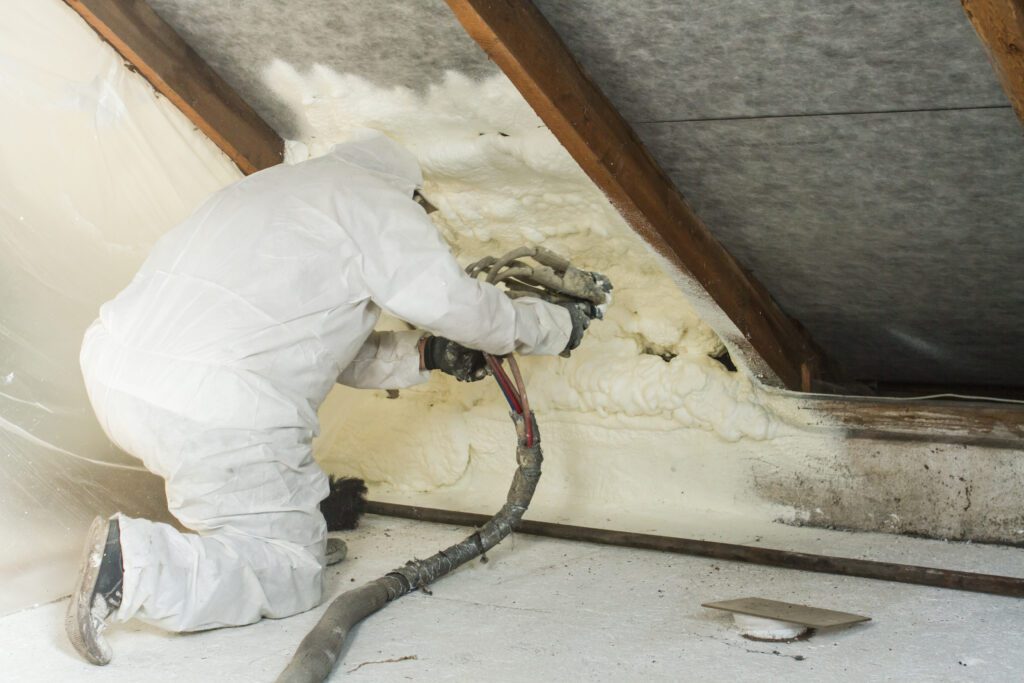
Insulating your home with spray foam is often more effective than using other types of insulation. However, you’ll still have to choose between open and closed cell spray foam. This requires knowing the differences between these two types of spray foam to understand which one is best for the level of protection you need.
How Do Open and Closed Cell Spray Foam Insulation Differ?
It’s easy to assume that one type of spray foam insulation is better than the other due to its different characteristics. This isn’t necessarily true. The differences between open and closed cell spray foam simply make each one ideal for different types of insulation jobs.
The first thing to learn about using spray foam insulation is what is meant by cells. Since the condition of the cells will affect how the insulation protects, you’ll want to use each type differently.
Open-Cell Foam
The cells are the bubbles that make up the foam. In open-cell foam, the bubbles aren’t fully closed. In practical terms, this means the foam is more flexible and softer.
Closed-Cell Foam
These cells are fully encapsulated and pressed together to create a more rigid foam. This prevents air and moisture from getting inside the foam.
How Density Differs
Closed-cell spray foam forms denser insulation than open-cell insulation. With open-cell insulation, you can expect a maximum density of .5 pounds for each cubic foot. Closed-cell insulation offers a minimum density of 1.75 pounds per cubic foot.
How R-Value Is Affected
R-value measures heat flow, so a higher R-value offers better insulation. Closed-cell insulation has a higher R-value than open-cell insulation. For comparison, closed-cell foam offers a six to seven R-value per inch, while open-cell foam offers about a 3.5 R-value.
The Expansion Rates
The rate of expansion determines how many layers of foam you’ll need for proper attic insulation. Closed-cell foam only expands about one inch as it dries. This means you’ll need multiple layers for full coverage of the area. Open-cell foam expands three inches, enabling you to cover the same amount of area with fewer layers.
When to Use Closed-Cell Foam Insulation
Closed-cell insulation is best used inside walls where space is a concern. Since the cells are compressed, they form a tighter barrier that keeps away moisture and air. Once it dries, the foam is also water-resistant, making water damage far less likely. This type of insulation adds to the structural integrity of your home as well.
When to Use Open-Cell Foam Insulation
The better expansion rate of open-cell insulation makes it ideal for insulating hard-to-reach areas in an attic or basement. It’s also more effective in covering studs and other areas where there might be open gaps. This makes open-cell foam useful for soundproofing.
Consider the Cost
When choosing between open cell and closed cell spray foam insulation, you might also be considering the upfront cost. There are advantages and disadvantages to each. For instance, while the open cell is cheaper, you will need more layers to obtain the same level of protection as closed-cell foam.
In most cases, you should look at the level of protection you need and the area to be covered rather than the upfront purchase cost.
You should always contact a contractor with the tools and expertise to apply spray foam insulation. They will know how to add the insulation safely while ensuring all of the necessary areas are covered. When applied by a professional, spray foam will last longer and offer the best possible protection for your home.

